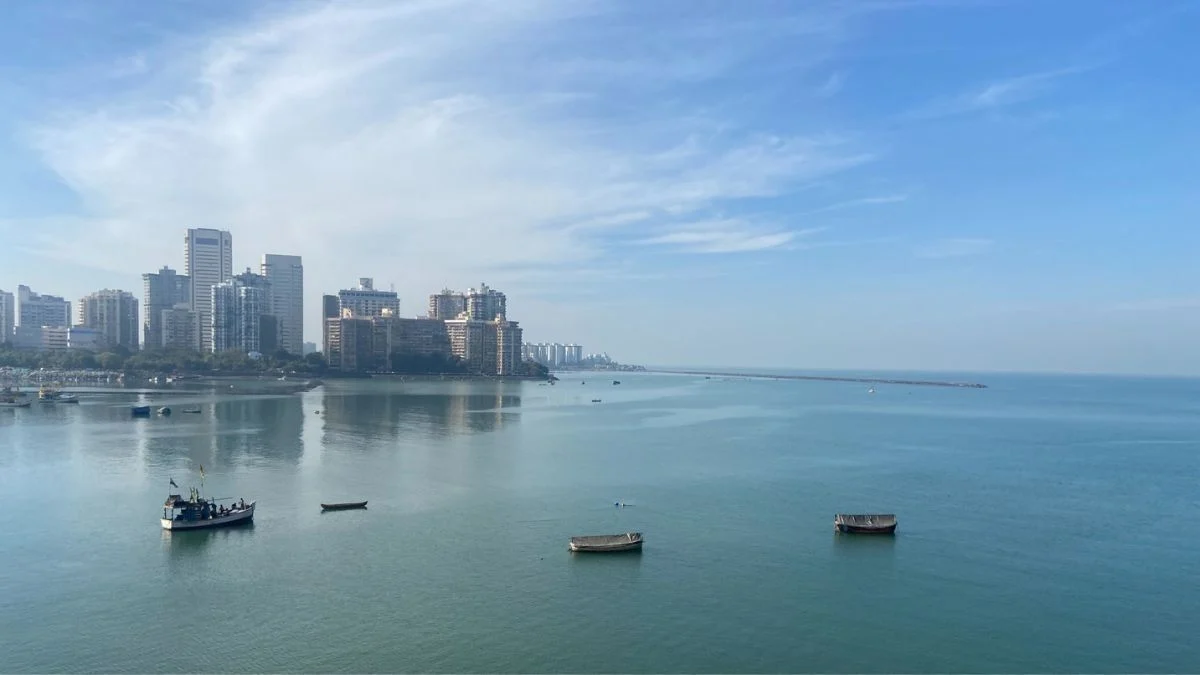India’s Pollution Crisis in 2025: A Tale of Two Realities
Pollution in India has evolved into a full-blown public health emergency. Despite ongoing awareness and government interventions, the situation remains dire—especially in northern parts of the country. Let’s take a deep dive into the pollution crisis in India in 2025, its major sources, regional disparities, global comparisons, and the effectiveness of government policies.
📊 The Reality in Numbers (2025 Update)
Despite various efforts over the past decade, pollution in India remains a monumental public health and environmental challenge. The data from 2025 exposes not just the alarming scale of the problem, but also the regional disparities, primary sources, and the gap between Indian standards and international benchmarks. Let’s explore the harsh truth in numbers:
🌫️ 1. Air Pollution: The Invisible Killer
🔹 Average PM2.5 Levels in India (2025)
- National Average (Annual): ~58 μg/m³
- North India Average: ~95–120 μg/m³
- South India Average: ~30–40 μg/m³
WHO Standard: 5 μg/m³
EU Standard: 25 μg/m³
India’s own Standard: 40 μg/m³
💡 Insight: Most Indian cities — especially in the north — are 10 to 20 times more polluted than WHO’s recommended safe levels.
🔹 Top 5 Most Polluted Cities in India (2025)
| Rank | City | PM2.5 (μg/m³) |
|---|---|---|
| 1 | Ghaziabad | 120 |
| 2 | Delhi | 110 |
| 3 | Noida | 105 |
| 4 | Kanpur | 102 |
| 5 | Lucknow | 100 |
🔸 South Indian cities like Bengaluru, Chennai, and Thiruvananthapuram typically have PM2.5 levels ranging between 25–45 μg/m³, staying within India’s limit but still well above WHO standards.
🚛 2. Major Sources of Air Pollution (% Contribution)
| Source | Contribution (%) |
|---|---|
| Vehicular Emissions | 28% |
| Industrial Emissions | 25% |
| Dust from Construction | 17% |
| Household Biomass Burning | 14% |
| Agricultural Stubble Burning | 12% |
| Waste Burning & Others | 4% |
🟡 Key Concern: Seasonal stubble burning in Punjab and Haryana alone can push Delhi’s AQI into the “Severe” category (400+), choking over 20 million people.
💧 3. Water Pollution: A Silent Catastrophe
- 70% of India’s surface water is contaminated, affecting rivers like the Ganga, Yamuna, and Brahmaputra.
- 351 polluted river stretches identified by the CPCB (2025).
- Only 36% of sewage generated in urban India is treated — the rest flows untreated into water bodies.
Ganga River Snapshot:
- Coliform bacteria levels: ~300x safe limits in some stretches.
- Despite ₹30,000+ crore spent on Namami Gange, pollution levels remain high due to poor enforcement and lack of decentralised sewage systems.
🏙️ 4. North India vs South India: Pollution Divide
🔹 Why North India is Worse:
- Landlocked geography → poor air circulation
- Cold winters → smog formation and inversion layers
- High population density
- Industrial and agricultural belt
- Stubble burning in Punjab, Haryana, and western UP
🔹 Why South India is Better:
- Coastal location → better wind flow and pollution dispersion
- Less reliance on biomass burning
- Greater greenery and rainfall
- Lower industrial intensity in many areas
🧭 Result: People in Delhi-NCR breathe air that’s 3–4 times worse than that in southern metros like Chennai or Bengaluru.
🏥 5. Health Impact in Numbers (India, 2025)
- 2.1 million deaths annually attributed to air pollution
- 28% of child deaths (under 5) linked to environmental pollution
- India has 7 of the top 10 cities with the highest PM2.5 levels globally
- Estimated loss to GDP: ~8.5% annually due to pollution-linked health burdens and productivity loss
🌍 6. Global Comparisons (2025)
| Parameter | India | WHO Std | EU Std |
|---|---|---|---|
| PM2.5 (avg) | 58 μg/m³ | 5 μg/m³ | 25 μg/m³ |
| Safe Drinking Water Access | 91% urban, 78% rural | 100% | 100% |
| Sanitation Access | 75% | 100% | 100% |
| Wastewater Treated (%) | 36% | 100% | 90–95% |
🧨 Insight: India lags significantly in both air and water safety, and current infrastructure is inadequate to bridge the gap in the near future without radical reforms.
🔍 Conclusion
The 2025 numbers reveal a grim reality — pollution is not just an environmental concern but a national health emergency. While India has made some strides in monitoring, policy formation, and technological interventions, implementation and enforcement remain weak, and regional disparities remain stark.
If the current trajectory continues, the health costs, climate consequences, and ecological damage will escalate beyond control. Urgent action, stricter regulation, clean energy transitions, and public awareness are no longer optional — they are imperative.
Major Sources of Pollution and Their Contributions
Understanding the primary sources of pollution is crucial for effective mitigation. The major contributors to air pollution in India, along with their estimated percentage contributions, are:
- Vehicular Emissions: Approximately 28%. Rapid urbanization and increased vehicle ownership have led to higher emissions, especially in metropolitan areas.
- Industrial Emissions: Around 22%. Industries, particularly those using coal and other fossil fuels, release significant pollutants into the atmosphere.
- Crop Residue Burning: Contributes about 17%. Predominantly in northern states like Punjab and Haryana, farmers burn crop residues post-harvest, releasing substantial pollutants.
- Residential Biomass Burning: Approximately 13%. In rural areas, the use of wood, cow dung, and other biomass for cooking and heating contributes to indoor and outdoor pollution.
- Construction and Road Dust: Around 10%. Unregulated construction activities and poor road conditions lead to significant dust emissions.
- Other Sources (including waste burning and fireworks): About 10%. These activities, though intermittent, add to the pollution load.
These estimates highlight the multifaceted nature of pollution sources in India, necessitating a comprehensive approach to address them.
| Pollution Source | Estimated Contribution |
|---|---|
| Vehicular Emissions | 28% |
| Industrial Emissions | 22% |
| Crop Burning (Stubble Burning) | 17% |
| Residential Burning (Wood, Cow Dung) | 13% |
| Construction and Road Dust | 10% |
| Others (Waste burning, Fireworks, etc.) | 10% |
Comparison with WHO & European Union Standards
| Standard | PM2.5 Annual Limit | Reality in North India (2025) | Reality in South India (2025) |
|---|---|---|---|
| WHO | 5 µg/m³ | 50–120 µg/m³ | 20–40 µg/m³ |
| European Union (EU) | 25 µg/m³ | Exceeds 4x–6x in North | Exceeds 1.5x–2x in South |
The World Health Organization (WHO) has set stringent air quality guidelines to safeguard public health. As of 2025, the WHO recommends an annual mean PM2.5 concentration of no more than 5 µg/m³ . In contrast, the European Union’s limit is 25 µg/m³ .Environment
In comparison, many Indian cities exceed these limits by significant margins. For instance, Delhi’s average PM2.5 levels often range between 100-120 µg/m³, which is 20-24 times the WHO’s recommended limit and 4-5 times that of the EU’s standard. Southern cities fare better but still exceed WHO guidelines, with PM2.5 levels between 20-40 µg/m³.
India’s national standard remains 40 µg/m³ (8x WHO limit), which many northern cities still surpass significantly.
North vs. South India: Disparities in Pollution Levels
The stark contrast in pollution levels between North and South India can be attributed to several factors:
- Geographical and Climatic Conditions:
- North India: Landlocked with a cooler climate, especially during winters, leading to temperature inversions that trap pollutants close to the ground.
- South India: Proximity to the coast ensures better dispersion of pollutants due to sea breezes and a warmer climate that prevents temperature inversions.
- Agricultural Practices:
- North India: Widespread practice of crop residue burning, particularly in Punjab and Haryana, significantly deteriorates air quality during post-harvest seasons.
- South India: Farmers adopt alternative methods like plowing the residue back into the soil or using it for other purposes, reducing open burning incidents.
- Industrial Distribution:
- North India: Higher concentration of heavy industries and coal-based power plants contributes to elevated pollution levels.
- South India: Diversified industrial base with a mix of technology and service industries results in comparatively lower emissions.
- Energy Consumption Patterns:
- North India: Greater reliance on coal for electricity generation and heating during winters increases pollutant emissions.
- South India: Higher adoption of renewable energy sources like wind and solar, leading to cleaner energy production.
These factors collectively contribute to the observed disparities in air quality between the two regions.
🌍 The Devastating Effects of Pollution on Humans, the Environment, and Planet Earth
Pollution is no longer just a nuisance — it’s a full-blown crisis impacting human health, ecosystems, and the long-term sustainability of the planet. From the air we breathe to the water we drink, pollution silently infiltrates every aspect of life. Below is a deep and structured overview of its widespread consequences:
🧬 I. Effects of Pollution on Human Health
Pollution, especially air and water pollution, poses serious threats to human health. According to WHO, pollution is responsible for 1 in 6 deaths globally.
1. Respiratory Diseases
- Airborne particles (PM2.5, PM10) penetrate deep into the lungs
- Increases risks of asthma, bronchitis, chronic obstructive pulmonary disease (COPD), and lung cancer
- Children and the elderly are particularly vulnerable
2. Cardiovascular Problems
- Long-term exposure to air pollution increases risks of heart attacks, strokes, high blood pressure, and heart failure
3. Neurological Effects
- Fine particles have been linked to cognitive decline, memory loss, and neurological disorders like Alzheimer’s and Parkinson’s
4. Reproductive and Developmental Harm
- Pollution can cause miscarriages, birth defects, and hormonal disruptions
- Lead, mercury, and other heavy metals interfere with children’s physical and mental development
5. Increased Cancer Risk
- Carcinogens from industrial and vehicular emissions raise the risk of skin, liver, bladder, and lung cancers
6. Mental Health Impact
- Studies link air pollution to depression, anxiety, and increased suicide rates
- Constant noise pollution contributes to stress, insomnia, and emotional fatigue
🌱 II. Environmental Damage from Pollution
Pollution doesn’t stop with human health — it wreaks havoc on ecosystems, biodiversity, and natural resources.
1. Air Pollution
- Smog reduces sunlight penetration, impacting plant photosynthesis
- Acid rain damages soil, aquatic habitats, and corrodes buildings and crops
2. Water Pollution
- Contaminated water kills marine life, affects coral reefs, and spreads diseases like cholera and typhoid
- Eutrophication (excess nutrients) causes dead zones in oceans and lakes
3. Soil Contamination
- Industrial waste and pesticide overuse degrade soil fertility, making land unfit for agriculture
- Heavy metals accumulate in crops, entering the food chain
4. Wildlife Endangerment
- Animals ingest plastic and toxic chemicals, often leading to death
- Noise pollution disrupts animal mating calls and migratory patterns
- Habitat destruction from pollution leads to biodiversity loss and extinction
🌐 III. Global Impact on Earth
Pollution is accelerating the planetary degradation process, with long-term and potentially irreversible consequences.
1. Climate Change Acceleration
- Air pollutants like black carbon, methane, and ozone are potent greenhouse gases
- These pollutants trap heat in the atmosphere, intensifying global warming
2. Ozone Layer Depletion
- CFCs and other industrial chemicals have thinned the ozone layer, exposing Earth to harmful UV radiation
- Increases risks of skin cancer and harms crops and phytoplankton
3. Ocean Acidification
- CO₂ emissions dissolve in oceans, forming carbonic acid, reducing pH levels
- Threatens marine biodiversity and food chains
4. Polar Ice Melting
- Pollution-driven climate change is melting polar ice at alarming rates
- Leads to sea-level rise, flooding, and habitat destruction for polar species
5. Resource Depletion
- Polluted resources (air, water, soil) become unusable, shrinking the planet’s natural capital
- Increases pressure on remaining clean resources and fosters geopolitical conflict
🛑 The Takeaway: Pollution is a Global Threat
Pollution is not isolated to cities or industrial zones — it’s a global crisis that affects every living being and the Earth itself. While some effects are immediate (like breathing difficulty in polluted air), others are slow but devastating, such as climate change, infertility, and species extinction.
To truly address the problem, we need:
- Stricter policies and enforcement
- Public awareness and behavior change
- Global cooperation to phase out hazardous substances
The time to act is not tomorrow — it’s now.
Government Measures & Their Effectiveness
| Policy/Measure | Objective | Effectiveness (2025) |
|---|---|---|
| National Clean Air Programme (NCAP) | 20-30% reduction in PM levels by 2024 | Partial success in South; poor in North |
| Faster Adoption of EVs | Reduce vehicular emissions | EV sales up 30%, but grid still coal-heavy |
| Ban on Firecrackers | Reduce festive spikes | Effective in cities; limited in rural areas |
| Crop Burning Alternatives Subsidy | Discourage stubble burning | Adoption growing, but limited scalability |
| Odd-Even Rule (Delhi) | Reduce cars on road | Short-term improvement only |
🏛️ Government Measures So Far: What India Has Done to Tackle Pollution (2025 Update)
Over the past few years, the Indian government has launched a range of national and regional initiatives to combat pollution — especially air and water pollution. However, while intentions are strong on paper, the success and execution of these efforts remain uneven across states and sectors.
🇮🇳 1. National Clean Air Programme (NCAP)
Launched: January 2019
Target: 20–30% reduction in PM2.5 and PM10 levels by 2024 (now extended to 2026)
Cities Covered: 131 non-attainment cities (those that failed to meet the National Ambient Air Quality Standards)
🔹 Key Features:
- Air quality monitoring expansion (from 132 to 500+ stations)
- Performance-linked funding to states
- City-specific clean air action plans
- Source apportionment studies for targeted interventions
📉 Progress (As of 2025):
- Only 38 cities have achieved a 20%+ drop in PM2.5
- Major metros like Delhi, Kanpur, and Varanasi saw marginal improvements or stagnation
- Fund utilization remains low in many cities due to bureaucratic delays
🌾 2. Crop Residue Management & Stubble Burning
One of the largest seasonal contributors to air pollution in North India is stubble burning in Punjab and Haryana.
🚜 Measures Taken:
- Financial incentives to farmers for in-situ crop residue management
- Distribution of tools like Happy Seeders, Super-Straw Management Systems
- Promotion of bio-decomposers and biogas production units
📉 Impact So Far:
- Reduction in stubble burning events by ~30% (2021–2024) in Punjab
- However, 2024 saw a resurgence due to delayed rains and harvesting season overlaps
- Farmers demand greater subsidies and awareness before shifting to alternatives
🧪 3. Emission Norms and Fuel Reforms
🛢️ BS-VI Fuel Standard:
- Rolled out nationwide in April 2020, leapfrogging BS-V
- Reduces sulphur content in fuel by 80% (from 50 ppm to 10 ppm)
🔧 Industrial Emission Norms:
- Stringent standards for coal power plants
- Enforcement via Continuous Emission Monitoring Systems (CEMS)
🚫 Setbacks:
- Deadline extensions for power plants (original 2017 → now 2026 in some states)
- Poor compliance and lack of penalties in some polluting clusters
🗑️ 4. Waste Management and Plastic Bans
🚯 National Plastic Waste Management Rules:
- Single-use plastic ban on items like straws, cutlery, polystyrene in July 2022
- Focus on Extended Producer Responsibility (EPR) for plastic producers
🧹 Solid Waste Management:
- Swachh Bharat Abhiyan 2.0: Focus on 100% segregation at source, composting, and WTE (waste-to-energy)
- Several cities have achieved “ODF++” (Open Defecation Free Plus) status
📉 Challenges:
- Poor recycling infrastructure in Tier 2 and 3 cities
- Unregulated landfills still release methane and leachate, polluting groundwater
🌀 5. Urban Transportation Initiatives
🚊 Promotion of Public Transit:
- Expansion of metro rail in cities like Pune, Ahmedabad, and Kochi
- Electric buses introduced under the FAME II scheme (Faster Adoption of Electric Mobility)
🚗 Electric Vehicles (EVs):
- Target: 30% of all new vehicles to be EVs by 2030
- EV sales in 2025 expected to hit 2 million units, led by 2-wheelers and 3-wheelers
📉 Hurdles:
- Slow development of charging infrastructure
- High upfront costs for consumers
🌿 6. Afforestation and Green Cover Expansion
🌱 Compensatory Afforestation Policy:
- Mandates tree planting for diverted forest land
- Urban forestry drives under Nagar Van Yojana
📉 Reality Check:
- Forest degradation still high in mining belts (Jharkhand, Chhattisgarh)
- Many plantation drives use non-native species, impacting biodiversity
🧼 7. River Cleaning Programs
🏞️ Namami Gange Mission:
- Budget: ₹30,000+ crore since launch
- Aim: Clean and rejuvenate Ganga and its tributaries
🧪 Actions:
- Sewage treatment plants (STPs)
- Riverfront development
- Industrial effluent monitoring
📉 Limitations:
- Over 35% of sanctioned STPs still under construction or delayed
- High biochemical oxygen demand (BOD) still detected in stretches like Kanpur
🧭 8. Policy and Legal Reforms
⚖️ Key Instruments:
- Environment Protection Act, 1986
- Air (Prevention and Control of Pollution) Act, 1981
- Water Act, 1974
🧾 Recent Additions:
- Commission for Air Quality Management (CAQM) for Delhi-NCR
- Real-time air quality dashboards and public grievance portals
📉 Implementation Gaps:
- Low prosecution rates
- Many polluters continue operations with minor fines
🧠 9. Public Awareness Campaigns
- “Harit Diwali, Swasth Diwali”
- Eco Clubs in schools and colleges
- Mandatory environmental studies in curriculums
📉 Limitation:
- Campaigns often lack follow-up, measurement, or behavior change insights
🧮 Summary: Are These Measures Working?
| Domain | Government Action | Success Level (1–5 ⭐) |
|---|---|---|
| Air Quality (NCAP) | Policy framework, low enforcement | ⭐⭐ |
| Water (Namami Gange) | Infrastructure spending, mixed results | ⭐⭐⭐ |
| Plastic/Waste | Rules and bans, poor rural enforcement | ⭐⭐ |
| Agriculture | Tech push, farmer resistance remains | ⭐⭐⭐ |
| Transportation | EV push, metro growth, early-stage impact | ⭐⭐⭐ |
| Forest & Green Cover | Plantations, biodiversity challenges | ⭐⭐ |
🔍 Final Thought:
India’s battle against pollution is half-won on paper, but still lagging in implementation and accountability. While the government has laid out an impressive range of initiatives, lack of strict enforcement, underfunded systems, and regional disparities continue to hold progress back. What’s needed now is decentralized action, strong local governance, transparent reporting, and citizen engagement.
Despite well-intentioned policies, implementation remains inconsistent across regions.
✅ Possible Long-Term Solutions to Combat Pollution in India
India’s pollution crisis isn’t just a seasonal concern — it’s a deep-rooted structural issue affecting public health, the economy, biodiversity, and climate resilience. While short-term interventions help, what the country truly needs is systemic, long-term strategies that go beyond firefighting.
Here’s a comprehensive breakdown of long-term solutions India must adopt to fight pollution sustainably:
🌳 1. Urban Rewilding & Green Infrastructure
Modern Indian cities are concrete-dominated, leading to heat islands, poor air quality, and high energy consumption.
🌱 Solution:
- Integrate urban forests, green belts, vertical gardens, and green rooftops
- Implement mandatory tree cover ratios for residential and commercial buildings
- Develop eco-sensitive zoning in city planning
🌿 Long-Term Impact:
- Improves air filtration, lowers temperature, and enhances urban biodiversity
- Encourages sustainable architecture and reduces carbon footprint
🚉 2. Massive Investment in Clean Public Transit
The private vehicle boom is one of the largest contributors to urban pollution. The long-term solution lies in transitioning towards efficient, affordable, and clean public transport.
🚍 Solution:
- Expand metro networks, electric bus fleets, and last-mile connectivity
- Develop dedicated bicycle lanes and walkable cities
- Introduce congestion pricing in urban cores (similar to London, Singapore)
🛣️ Long-Term Impact:
- Reduces vehicular emissions, traffic congestion, and urban noise
- Promotes public health and accessibility across income groups
⚡ 3. Clean Energy Transition (Decarbonization)
India remains highly dependent on coal, which accounts for nearly 70% of electricity generation.
🔋 Solution:
- Ramp up solar, wind, hydro, and green hydrogen production
- Encourage rooftop solar adoption for homes and offices
- Phase out old, inefficient thermal power plants
🔄 Long-Term Impact:
- Drastically cuts SO₂, NOx, and particulate matter
- Helps meet net-zero carbon targets (India aims for 2070)
🌾 4. Sustainable Agriculture Practices
Agricultural pollution contributes to air, water, and soil degradation, especially due to stubble burning, fertilizer overuse, and methane emissions from livestock.
🌿 Solution:
- Promote natural farming, crop rotation, and bio-fertilizers
- Incentivize no-burn mechanized harvesting methods
- Scale biogas plants and climate-smart farming across rural areas
🍀 Long-Term Impact:
- Protects soil fertility and groundwater
- Reduces rural air pollution and boosts farmer income
🏭 5. Industrial Pollution Control & Green Manufacturing
Industries in India are still largely unregulated or poorly monitored, especially in non-attainment industrial belts.
🧪 Solution:
- Enforce Continuous Emissions Monitoring Systems (CEMS) in all plants
- Offer tax breaks and incentives for green technology adoption
- Mandate zero-liquid discharge systems in water-intensive industries
🏗️ Long-Term Impact:
- Cleaner manufacturing → cleaner rivers, air, and cities
- Competitive advantage for India in global green trade markets
🧼 6. Solid Waste & Plastic Management Overhaul
India generates over 62 million tonnes of waste per year, a large portion of which ends up in open dumps or rivers.
🗑️ Solution:
- Strengthen Extended Producer Responsibility (EPR) enforcement
- Build material recovery facilities (MRFs) and waste-to-energy (WTE) plants
- Digitize waste tracking and promote community-level segregation models
📦 Long-Term Impact:
- Reduces landfill methane emissions and marine litter
- Protects human health and local ecosystems
📚 7. Environmental Education & Behavior Change
Changing mindsets is key — laws alone can’t solve pollution. India’s future citizens need environmental consciousness from the ground up.
📖 Solution:
- Make climate literacy compulsory in school and college curricula
- Use public campaigns, storytelling, and influencer outreach to shift habits
- Gamify clean practices — e.g., apps that reward users for reporting pollution or recycling
🧠 Long-Term Impact:
- Builds a culture of sustainability
- Drives bottom-up citizen action and accountability
📊 8. Transparent Environmental Data & Accountability
Without transparent data, real-time monitoring, and citizen access, policy enforcement remains weak.
🔍 Solution:
- Expand real-time air/water quality dashboards at city and village levels
- Use AI and satellite tech to monitor illegal activities (e.g., stubble burning, dumping)
- Mandate public disclosure of pollution violations by industries and cities
🧾 Long-Term Impact:
- Enhances governance and trust
- Empowers citizen journalism and legal activism
🏞️ 9. Decentralized Governance & Local Solutions
What works in Delhi won’t work in Kochi. India needs region-specific climate action plans instead of one-size-fits-all policies.
🏘️ Solution:
- Fund and empower Panchayats and Urban Local Bodies (ULBs) with autonomy
- Encourage state-level pollution control boards (SPCBs) to innovate locally
- Foster inter-state collaboration — e.g., NCR-level crop residue management
🌐 Long-Term Impact:
- Ensures targeted and inclusive solutions
- Reduces regional disparities in pollution levels
🌍 10. Legally Binding Climate & Pollution Targets
India needs stronger legal frameworks to hold polluters accountable and set clear environmental performance targets.
📜 Solution:
- Introduce Pollution Performance Index for districts/states
- Penalize non-compliance with strict environmental tribunals
- Push for a Green Constitution amendment (e.g., right to clean air)
⚖️ Long-Term Impact:
- Institutionalizes environmental rights
- Aligns India’s development with global sustainability goals
🔚 Final Thought
India’s pollution crisis won’t disappear overnight — but with sustained political will, inter-sector collaboration, and grassroots engagement, these long-term solutions can shift the country from reactive cleanup to proactive sustainability.
Conclusion: The Path Ahead
India’s pollution crisis is not just an environmental issue—it’s a humanitarian one. While the South shows that better infrastructure and policies can lead to healthier air, the North remains choked by systemic challenges. Addressing pollution in India requires not just policy, but political will, public cooperation, and radical infrastructural reform.
Until then, for many Indians—especially in the North—clean air remains a privilege, not a right.








